Learning how to clean acrylic paint brushes is an important step in keeping your brushes working the way you expect them to and saving you from spending more than you have to replacing them due to wear and tear.
I remember when I first started, I had a difficult time stopping the paint from climbing up the bristles and underneath the ferrule, which is a big no-no. I mean, sometimes you can’t help it but the trick is to clean your brushes right away so that the paint doesn’t dry in there.
There are a lot of different ways to clean acrylic paint brushes including using a special brush cleaner. However, if you’re on a budget, you really don’t need to use a fancy cleaner. Save that money for building up your paint supply.
In This Article...
How Often to Clean Acrylic Paint Brushes
You’re going to hear a lot of opinions about how often to clean your brushes because there are no set rules. I do have a system that I follow but that’s more about making it a habit so I don’t forget.
This is also going to depend on how often you paint. If you paint every single day, you’ll have to clean your acrylic bushes more than someone who only paints once a week.
Of course, you’ll want to clean acrylic paint brushes as you are painting and switching colors but you don’t have to give your brushes a full-service spa day every time you use them. If you’re good about taking care of your paint brushes while you’re using them, once a month should be sufficient.
What to Use to Clean Acrylic Paint Brushes
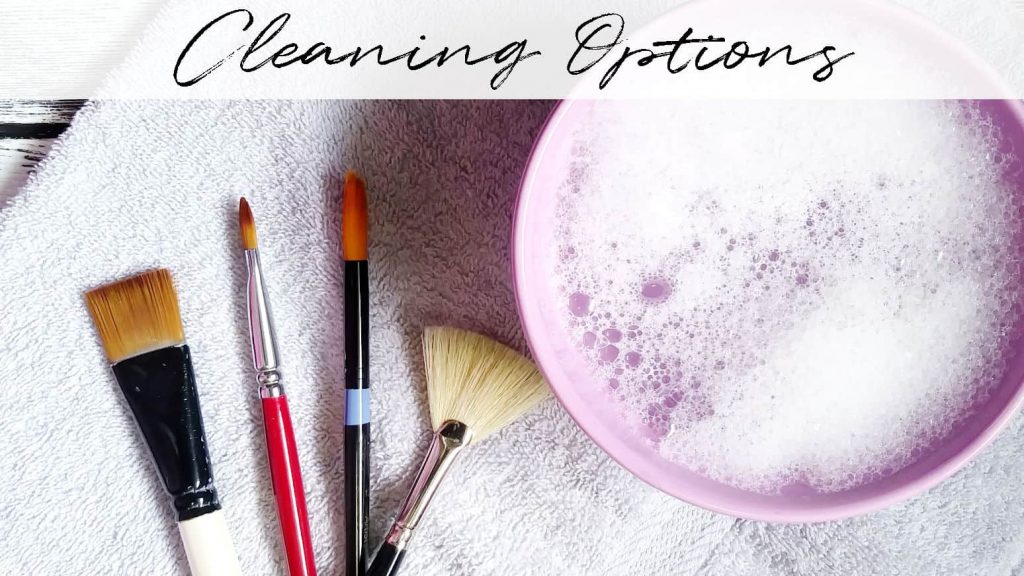
As I mentioned above, there are some great specialty soaps created specifically to clean brushes but if you don’t have the extra money to purchase these, don’t worry! You can use some things that are easily found at your local grocery or pharmacy. You could probably even find them at the dollar store.
- Baby Shampoo
- Murphy’s Oil
- Body Wash for Sensitive Skin
- Pure Castile Soap
- Basically, anything that avoids harsh chemicals
As you’ve probably figured out, gentle is the name of the game. You want to try to avoid anything that is too harsh. Out of all of the options listed above, my absolute favorite is Murphy’s Oil soap. It’s specifically made for wood so you know that it will be gentle enough for the handles of your brushes. It also has conditioning ingredients in it which is great for paint brush bristles.
The other awesome thing about the cleaners listed above is that you can find at least one option on sale at any given time which will save you money and time because you can just pick it up while you’re getting your groceries. It’s a win-win!
Cleaning Your Brushes as You Paint
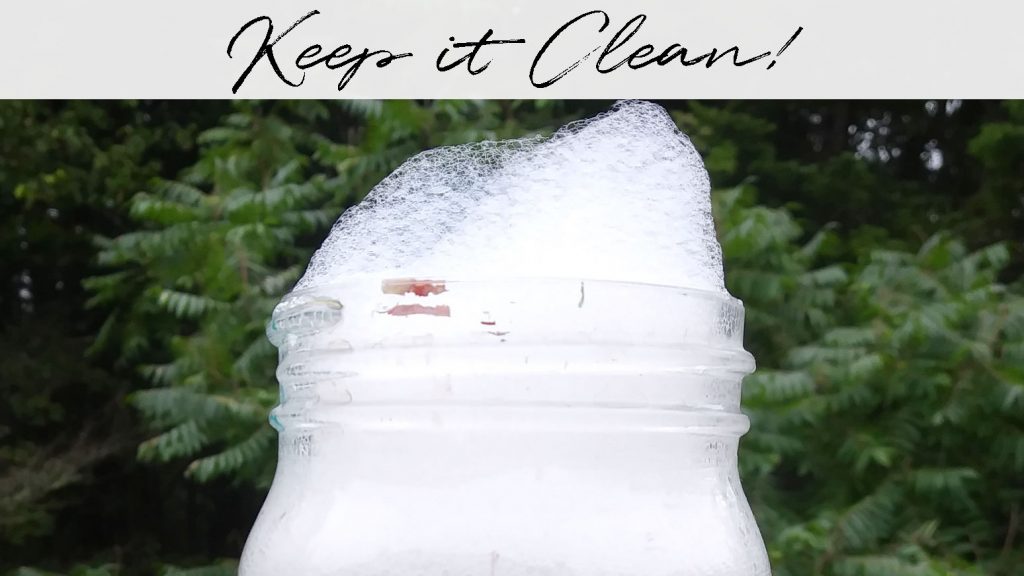
At the very least, you should have multiple jars of clean water and a rag for cleaning your paint brushes as you’re working on a project. Not only does it stop paint from building up and drying in the bristles and ferrule but it will keep your colors from getting muddy. Clean water and well rinsed brushes will go a long way in making sure your colors stay bright and true.
To keep your brushes happy while painting:
- Keep your brush damp at all times to avoid forgetting that there’s paint on it (don’t set the brush aside to grab a different one without rinsing it out first!)
- Don’t leave your dirty brush sitting in water (it will hurt the wooden handle and also might loosen the bristles from the ferrule)
- After rinsing, hold your brush with the bristle pointing downward and gently squeeze the excess water out of the bristles using a clean rag
- Reshape the damp bristles with your fingers as much as you can so that the bristles are all going in the same direction (nothing worse than stray bristles that point off to the side and don’t play nicely with the other bristles in the neighborhood!)
- Lay your acrylic paint brush horizontally to dry (Never with the bristles up or the water will collect under the ferrule and cause it to rust or even loosen the bristles causing it to shed)
My Personal Method For Cleaning My Brushes Everyday
So, this may seem like a lot of extra fluff and nonsense to some, but I like to keep three jars of water on my painting desk. One I keep for rinsing while I’m working, one has a bit of soap added to it, and the last is for rinsing the soap out of my brushes.
If I know that I’m done using a brush, and I’m moving on to using a different one, I want to make sure that I’ve got as much paint out of my brush as possible.
I give my brushes a really good rinse in my “paint water” jar first to try to get as much pigment out as possible. Then, I swish the brushes through the soapy water without crushing the bristles on the bottom of the jar. This gets rid of any remaining pigment. Lastly, I rinse well in the “final rinse” water jar.
After years of painting, this is the method that works best for me and reassures me that my brushes are getting a good cleaning in between use. Having the two extra jars right there where I work reminds me to clean my brushes.
Full-Service Spa Experience
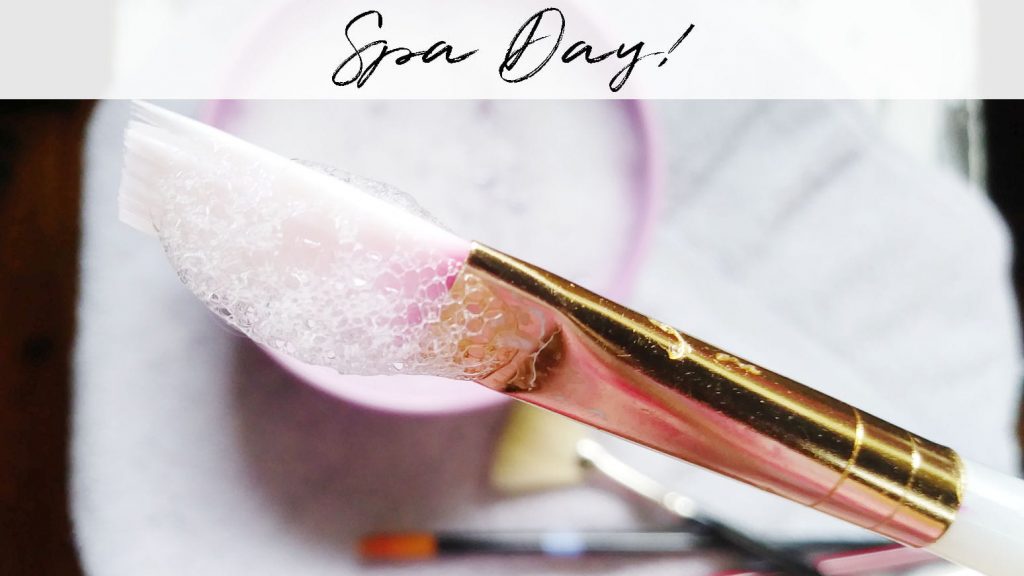
At least once a month, or even more often, treat your brushes to an extra special bougie spa day. To deep clean acrylic paint brushes, and keep them in tip-top shape, plan to spend some time paying attention to each brush in your tool kit.
Get yourself set up at the kitchen or bathroom sink with your brushes, your cleaner of choice, some paper towel, and a couple of clean hand towels for drying.
Step One – Get your brush wet using warm (not hot!!!) water and get your hand wet as well
Step Two – Add a drop of your liquid cleaner to the palm of your wet hand
Step Three – Take your brush and make continuous circular motions in the soap that’s on your hand. Continue doing this, going clockwise and counterclockwise, until the soap is nice a foamy, and covering the bristles right up to the ferrule
Step Four – Start running the water again and continue with step three until the water runs clear of soap and paint
Step Five – Squeeze the excess water from the brush using your fingers and then grab a piece of paper towel and gently squeeze the bristles again. If you see pigment from the brush on the paper towel, repeat steps one through four and test your acrylic paint brush for pigment again
Step Six – Using one of the clean fluffy hand towels, make sure that the handle and the ferrule are free from water and give the bristles one more gentle squeeze
Step Seven – Reshape the bristles while they’re still damp to avoid stray bristles. Don’t skip this step! It’s will save you a ton of frustration later on
Step Eight – Lastly, lay the clean acrylic paint brush on a hand towel and leave it to completely dry
Even More Tools to Help You Maintain Your Paint Brushes

There are a few more things you can do to baby your acrylic paint brushes but they aren’t really necessary. Think of it as getting your hair styled after a wash and cut.
Silicone Makeup Brush Cleaning Mats
Silicone makeup brush cleaning mats are designed with different raised patterns on the surface. This is perfect to clean acrylic paint brushes when used with soap. The light friction of the brush gliding across the raised surface will help to create lots of suds, cutting down the time it will take to clean your brushes and save your hands from continuous exposure to soap. If you’re interested in more information about cleaning mats, I found this in-depth article, “Best Makeup Brush Cleaning Mats” by The Cleaning Institute.
Hair Conditioner
You can use hair conditioner to keep the bristles of your brushes soft and to help them keep their shape until you use them again. They do make conditioners specific to paint brushes but it’s perfectly acceptable to use regular old hair conditioner.
Just use a small amount of conditioner when you are doing step seven from the instructions above. You can leave the conditioner in the bristles to dry. Just make sure to give your paint brush a good rinse before using it on your next project.
Rubbing Alcohol
This one is a bit tricky and, personally, I only do this if my favorite brush is destined for the trash because I can’t get the dried paint out using the method mentioned above.
The reason I don’t like to do this is that it can dissolve the glue that holds the bristles in place if you aren’t super careful! Although this sounds a bit nerve-wracking, using rubbing alcohol to loosen dried paint works really well!
- Pour a small amount of rubbing alcohol into a small dish. You only want enough to cover halfway up the bristles before reaching the ferrule because paintbrush bristles are designed to “soak up” paint and you really want to try to not let the alcohol get under the ferrule
- Place your brush in the rubbing alcohol and gently swish it back and forth for about a minute and then directly rinse it in a jar of clean warm water. Then, use some soap to give it a real good clean and rinse again
- Next, check to see if the bristles will bend up near the ferrule. If so, dry and reshape your brush and lay it on a clean cloth to dry
- If you feel like the brush is still too stiff, repeat the process. You’ll know that it’s working because the rubbing alcohol will begin to turn color from the leftover pigment that’s been stuck in your brush.
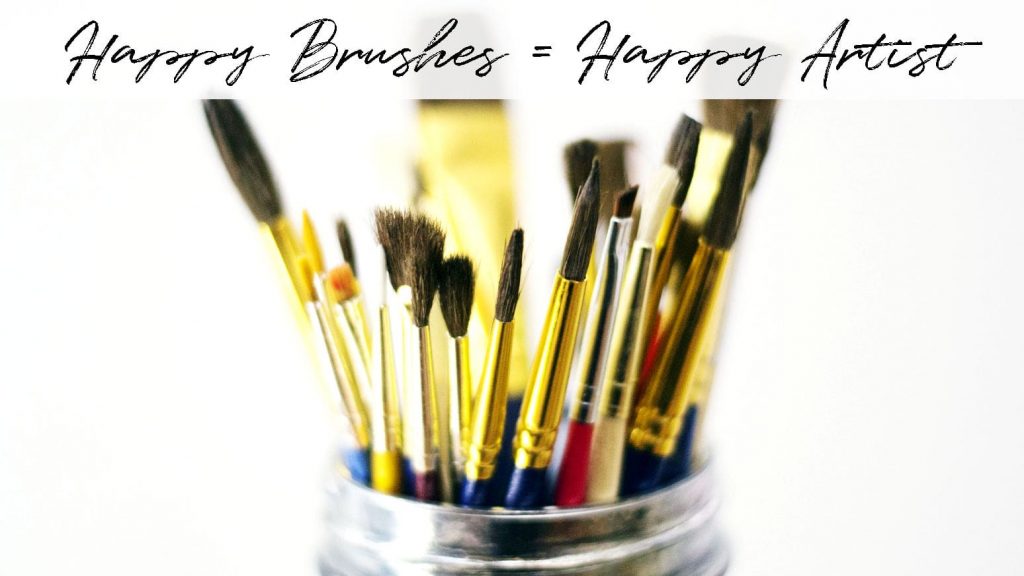
Making sure you have thoroughly clean acrylic paint brushes will help extend the life of your favorite tools and save you money in the long run. You can use easy to find products to help you with the job from your local dollar store, grocery store, or pharmacy.
The process you use to clean your brushes doesn’t have to be complicated and can, actually, be pretty simple if you use my personal method. Plus, when you clean your brushes as you go, you can go longer between full blown spa treatments.
Do you have a different way to clean acrylic paint brushes? Let me know in the comments below and, if you’re wanting some ideas on how to store your brushes and other painting supplies, check out my article, “5 Tips for Organizing Your Art Supplies”.
Related Articles:

Meet Sara, a seasoned veteran in the world of art. With a knack for mixing paints to unveil breathtaking new hues, she’s adorned countless commissions and independently captivated art enthusiasts with her creations. Having spent over a decade immersed in the realm of art gallery management, Sara’s insight into the intricacies of the art scene shines through her work.
But don’t let her impressive résumé fool you – Sara’s approach to art is as lively as her palette. Known for her wit and humor, she infuses her passion for painting with a playful spirit, making every stroke a delightful adventure. As a dedicated mentor, she’s committed to guiding her fellow artists towards success, always staying ahead of the curve with the latest techniques and trends.

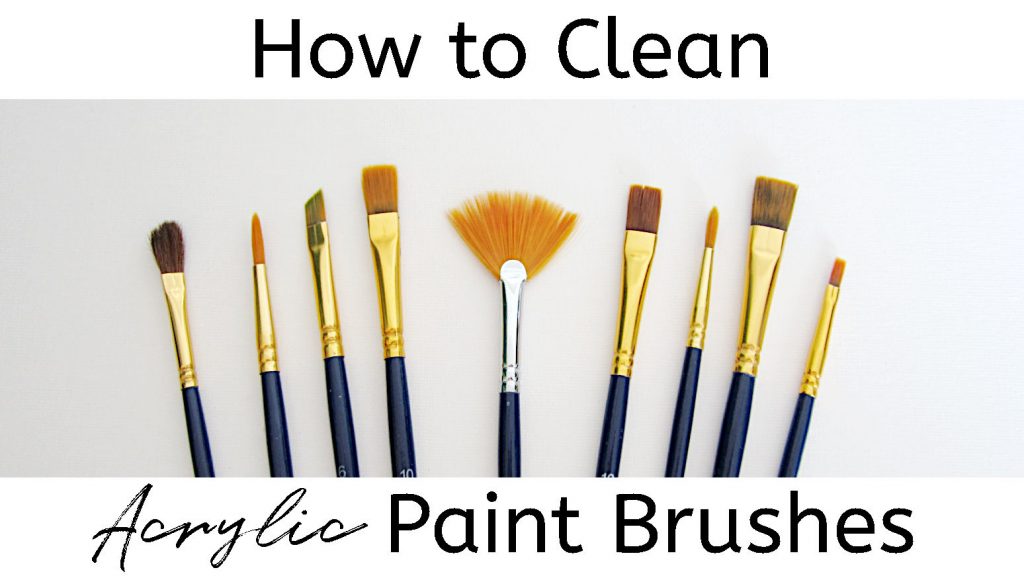
thank you for making this article very useful and keep up the good work
You are so welcome and always more than happy to help!